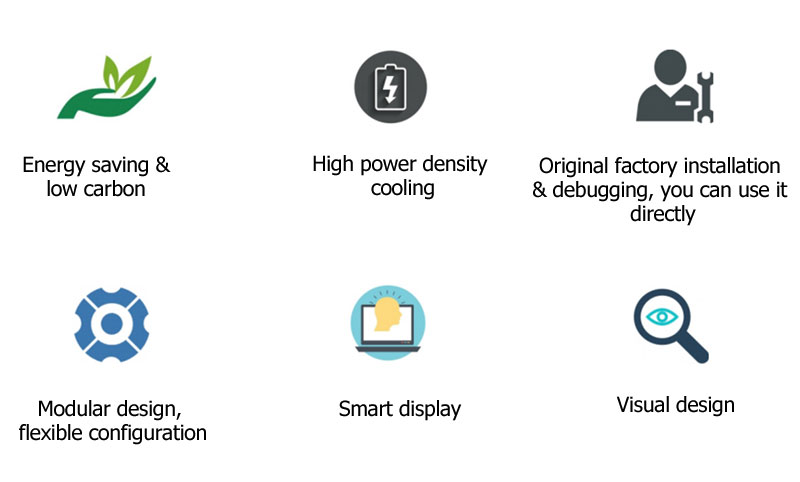Liquid Cooling Data Center
Contact us today for the perfect temperature control solution
A liquid cooling data center is a center that uses liquid cooling technology to cool data center equipment. This technology works by cooling a liquid and then moving the medium through the data center equipment to remove the heat. Compared with traditional air cooling methods, liquid cooling technology can more effectively reduce the temperature of equipment, improve energy consumption efficiency, and save energy costs.
Liquid cooling data center technology is gradually being widely used in finance, telecommunications, Internet service providers and other industries, and has the following functions:
1. Improve the energy consumption efficiency of the data center: Liquid cooling technology can take away heat, thereby improving the energy efficiency of the equipment, improving the energy utilization rate of the data center, and reducing energy consumption costs.
2. Improve equipment stability: Excessive temperature will not only affect the performance of the equipment, but may also cause equipment failure and affect the stability of the entire data center. Liquid-cooled data center technology allows equipment to run at lower temperatures, reducing equipment failure rates and improving the stability of the entire data center.
3. Achieve intensive management of data centers: The technology of liquid-cooled data centers requires the cooling pipes of all equipment to be connected and managed intensively, thereby making the maintenance and management of the data center more convenient.
4. Improve the safety performance of data centers: The technology of liquid-cooled data centers can eliminate hidden dangers such as fires caused by excessive temperatures and improve the safety performance of data centers.

Classification of liquid cooling data center
Spray type (refrigerant contact)
Store liquid and open holes on the top of the chassis. Depending on the position of the heating element and the amount of heat generated, the coolant can be sprayed on the heating element to achieve the purpose of cooling the equipment. The sprayed liquid is in direct contact with the device to be cooled, and the cooling efficiency is high; however, when the liquid encounters high-temperature objects during the spraying process, it will drift and evaporate, and the mist droplets and gas will be emitted to the outside of the chassis along the holes and gaps in the chassis, causing adverse effects on the computer room environment. The cleanliness is reduced or other equipment is affected.
Immersed (refrigerant contact)
In single-phase immersion liquid cooling, the electronic fluoride remains liquid. The electronic components are directly immersed in a dielectric liquid, which is placed in a sealed but easily accessible container, and heat is transferred from the electronic components to the liquid. A circulation pump is typically used to flow the heated e-fluid to a heat exchanger, where it is cooled and circulated back to the container.
Two-phase immersion liquid cooling (liquid and gas)
In two-phase immersion liquid cooling, the heat transfer efficiency of the liquid is exponentially improved through the boiling and condensation processes of the electronic fluorinated liquid. The electronic components are immersed directly in the dielectric liquid in a container that is airtight but easy to handle. Inside the container, heat is transferred from the electronic components to the liquid and causes the liquid to boil, producing steam. The steam condenses on a heat exchanger (condenser) within the vessel, transferring heat to facility cooling water that circulates through the data center.
Cold plate type (refrigerant non-contact)
Direct chip cooling involves pumps circulating a liquid medium through a cold plate mounted to the electronic components to dissipate heat. Liquids do not come into direct contact with electronic devices. While non-dielectric liquids (e.g. water/glycol) are typically used for direct chip cooling, dielectric electronic fluorinated fluids can also be used in direct chip applications to mitigate leakage related risks and improve hardware/IT equipment reliability. Direct chip cooling can be achieved using single-phase and two-phase technologies.
We provide complete temperature control systems design and manufacturing. From standard models to complete customized products up to 900 tons. We specialize in customer service and are dedicated to helping each customer have the optimal temperature control system for their specific need.
We provide non-standard customized solutions. Both single cooling chillers and cooling & heating combo units are available.
Email: info@lneya.com WeChat ID: +8615251628237 WhatsApp: +86 17851209193
 LNEYA
LNEYA
 简体中文
简体中文


















































































